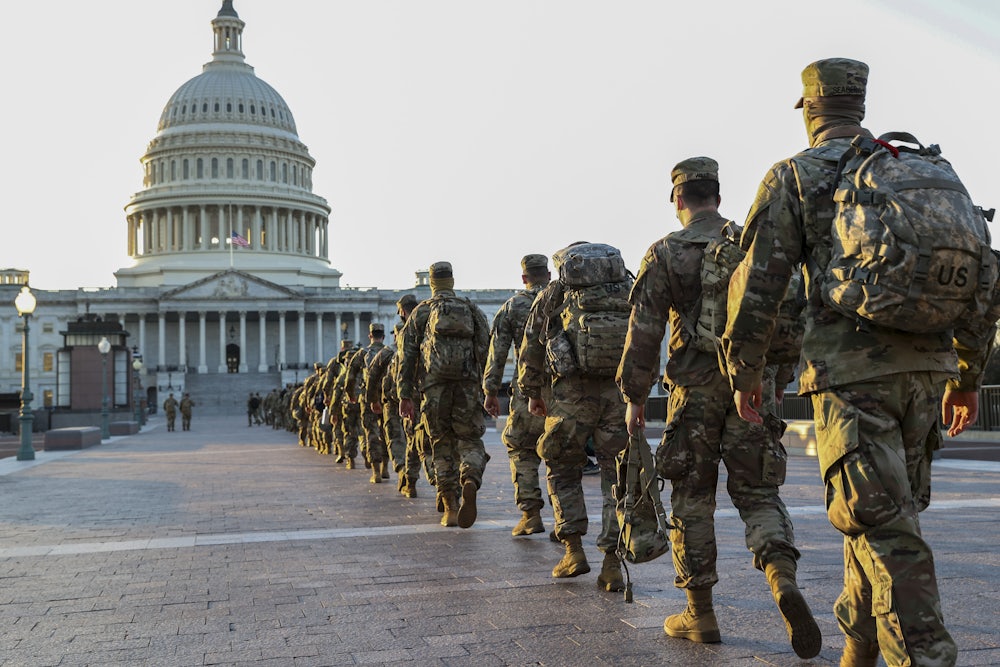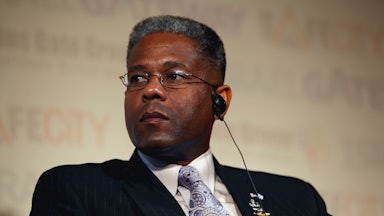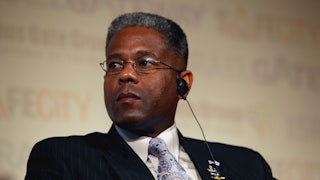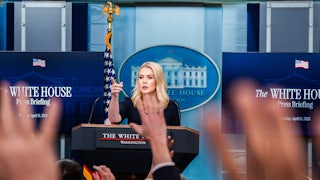Four years after Donald Trump’s sparsely attended inauguration, Joe Biden is likely to be sworn in before a crowd of, well, almost no one. Some past presidents will attend—though not Trump—and a few other dignitaries and celebrity performers, but that’s basically it. In response to the January 6 MAGA riot at the Capitol, and amid fears of more right-wing violence, the city has been subjected to a militarized lockdown to a degree not seen since at least 1968. Twenty-five thousand National Guard now roam the streets, along with thousands of police officers and representatives of other law enforcement agencies. Unscalable fences and checkpoints barnacle the center of the city. The part of D.C. where tourists usually gawp at the heart of imperial power—the National Mall and the White House—has now been rendered a no-go “red zone.”
Pundits have reached for comparisons to the American-instituted “green” zones of Kabul and Baghdad (even the Secret Service has used the term). But that elides some important facts, namely that while D.C. recently experienced a white supremacist uprising, it’s far from an active theater of conflict. It’s precisely because D.C. is not a war zone that its military occupation seems so shocking. Just a couple weeks ago, the capital was much like any other major American city, which is to say highly surveilled and policed but not occupied. It didn’t feel like a militarized ghost town, like a Call of Duty map.
It says a lot about the state of a country’s democracy that an ostensibly peaceful transfer of power can only be conducted under massive armed guard. Even if nothing violent happens at the inauguration—no rogue soldiers taking shots at the new president, no Trumpist hordes storming Capitol Hill—we’ll regret that the response to the current crisis was the complete and total militarization of what was once a signal event in American democratic life. Because if our country’s history is any guide, there’s no turning back from this.
While the threat of Trumpist violence is real, it’s not on the order of an invading army, making it hard to tell why such a disproportionate response is needed. Surveying the mayor’s office and various law enforcement agencies, Vox’s Alex Ward could find no justification for the huge military outlay. He described the several blocks around the White House as a “veritable fortress.” The enormous commitment of National Guard troops has also raised fears of an insider attack. Although the FBI is vetting guardsmen, Acting Secretary of Defense Christopher Miller said there is no specific threat. Even so, according to the Associated Press, 12 guardsmen who expressed extremist views or had connections to right-ring militias were removed from the inaugural security operation.
A brief glance at recent U.S. history shows that military and security commitments, once made, are difficult to roll back. Freighted with the responsibility of stopping the ever-imminent “next attack,” politicians and security officials will support whatever measures are deemed necessary—even if they shred civil liberties and make urban life unrecognizable. In this sense, the occupation of D.C. recalls the many strategic errors and moral blunders of the last two decades of the war on terror. Rather than learn from that experience and work toward nonmilitarized solutions to our security challenges, the political establishment seems ready to embrace a new smarter, wiser version of the war on terror, this time targeting domestic political extremists.
Consider, then, the Biden inauguration’s security theater to be the first operation in the new war against white supremacist terrorism. It’s being launched with the laudable goal of tamping down political violence, but it likely won’t end there, as shown by our still-unresolved global war on terror. If the last 20 years are any guide, the worst effects will be felt by the vulnerable—Muslims and other religious and ethnic minorities; people with criminal records; homeless people, whose encampments are deemed security threats. There will be successes but also a body count. (Perhaps Biden will, in the name of stopping a white supremacist attack in the Pacific Northwest, authorize the first domestic drone strike.)
There’s no law requiring Biden to be sworn in at the U.S. Capitol; he could have chosen the Oval Office or Rose Garden or a number of other, more secure locations. Instead, with a pandemic ravaging the country and the capital occupied by troops, the inauguration of our country’s oldest president has the feel of a gerontocracy celebrating its brush with fascism by reaffirming the worst elements of empire: Biden will swear his constitutional oath in front of a small army of soldiers deemed loyal to the republic. As we white-knuckle it through the final hours of Trump’s reign, it’s clearer than ever that Inauguration Day doesn’t represent a clean break—that his legacy will, in fact, haunt America for an unimaginably long time.
This article has been updated.








